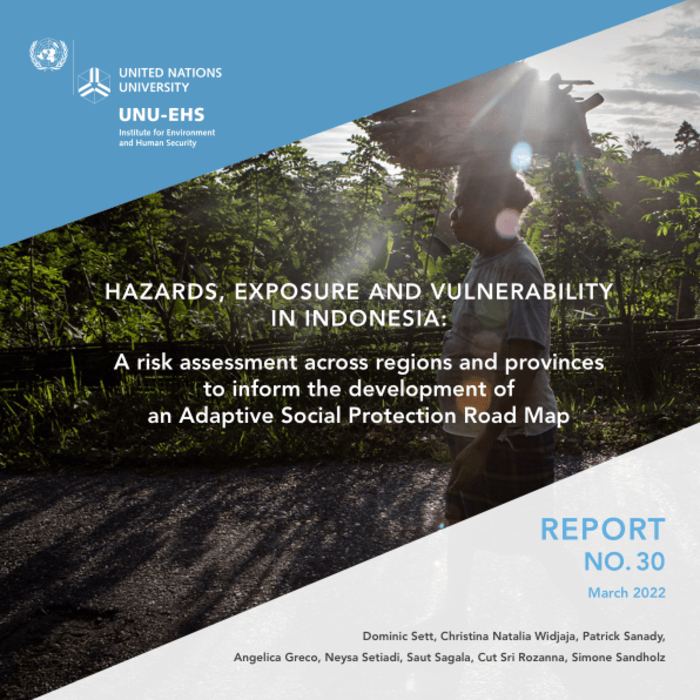Risk induced by natural hazards and climate change has been accelerating worldwide, leading to adverse impacts on communities’ well-being. Dealing with this risk is increasingly complex and requires cross-sectoral action. Adaptive Social Protection (ASP) has emerged as a promising approach to strengthen the resilience of communities by integrating Social Protection (SP), Disaster Risk Management (DRM) and Climate Change Adaptation (CCA) efforts. To inform this integration and thereby support the development of a functional ASP approach, the identification and provision of relevant data and information are vital. In this context, risk assessments are crucial as they establish the groundwork for the design of effective ASP interventions. However, despite the importance of risk information for ASP and the abundance of sectoral assessments, there is not yet a comprehensive risk assessment approach, a reality that also applies to Indonesia. Although the country is one of the international pioneers of the concept and has enshrined ASP at the highest national level in its development plans, this emphasis in policy and practice has been hampered by the absence of more unified assessment methods. The Hazard, Exposure and Vulnerability Assessment (HEVA) presented here takes a unique approach to develop such a cross-sectoral risk assessment and apply it throughout Indonesia.
The HEVA brings together different risk understandings of key actors both internationally and domestically within SP, DRM and CCA, as well as identifying commonalities across sectors to establish a joint understanding. The HEVA not only considers risk as an overarching outcome but also focuses on its drivers, i.e. hazards, exposure and vulnerability, to identify why specific communities are at risk and thus customize ASP interventions. Subsequently, risks are assessed for Indonesia’s regions and provinces based on this cross-sectoral risk understanding. Secondary data has been acquired from various existing sectoral assessments conducted in Indonesia, and in total, data for 44 indicators has been compiled to calculate hazard, exposure and vulnerability levels for all 34 Indonesian provinces. Findings of the HEVA suggest that overall risk is high in Indonesia and no single province can be characterized as a low-risk area, demonstrating a strong relevance for ASP throughout the whole of the country.

